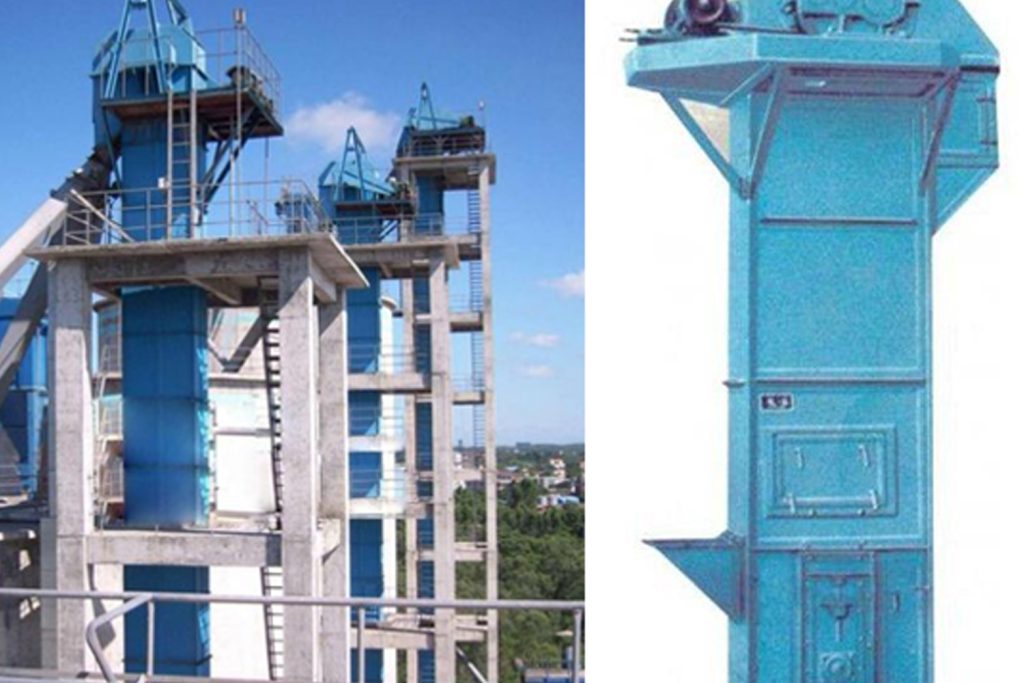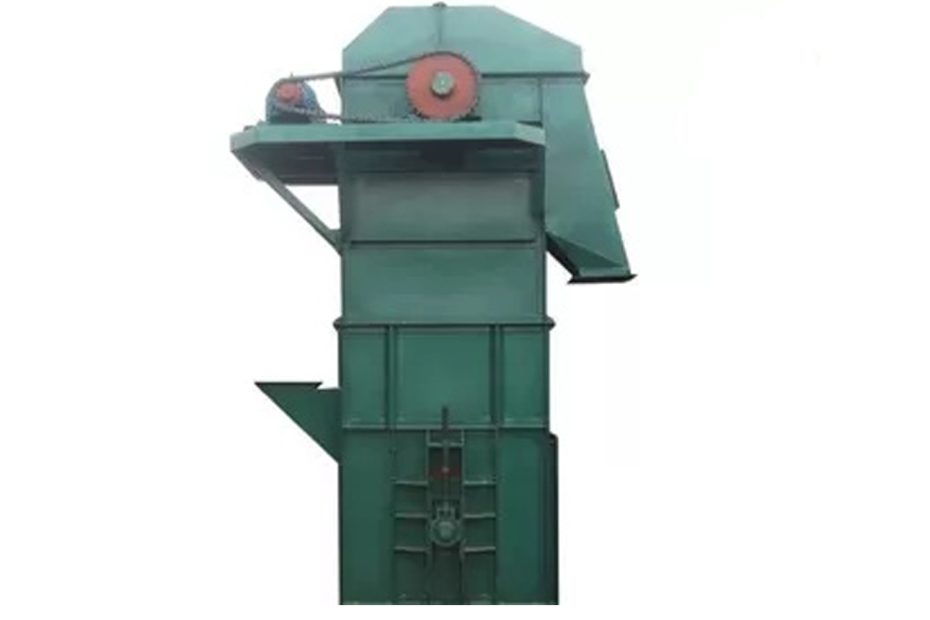Bucket elevator, also known as bucket conveyor or bucket elevator, is a mechanical conveying equipment used for conveying powder, granular, block and other materials in the vertical direction.The bucket elevator has large conveying capacity, large lifting height, low energy consumption (energy consumption is about 1/5~1/10 of pneumatic conveying), and good sealing performance.
The bucket elevator has simple structure, high transmission efficiency, and large conveying height, it is a common lifting device that can be used for vertical conveying of different granular materials, and is widely used in construction, food, chemical, metallurgy, mining and other industries.
Bucket elevator vs conveyor belt
In the realm of material handling systems, two stalwarts stand out: the venerable bucket elevator and the ubiquitous conveyor belt. Each has its unique strengths, making them indispensable in various industries. Let’s delve into the intricacies of these systems and discern the key differences between a bucket elevator and a conveyor belt.
What is a Bucket Elevator?
A bucket elevator is a mechanical conveying system designed for vertically transporting bulk materials. The heart of this system is a series of buckets attached to a chain or belt, which effectively scoops and lifts materials from one level to another. Commonly used in industries such as agriculture, mining, and manufacturing, bucket elevators offer an efficient means of elevating materials in a controlled manner.
What is Conveyor Belt ?
On the other side of the spectrum, the conveyor belt is an enduring symbol of material transportation on a horizontal plane. Conveyor belts consist of a continuous loop of material, typically rubber, that rotates over pulleys or drums. This looping mechanism facilitates the movement of goods from one point to another, horizontally and sometimes at an incline.
Contrasting Configurations
While both bucket elevators and conveyor belts share the fundamental purpose of material transport, their configurations differ significantly. A bucket elevator’s vertical orientation makes it ideal for lifting materials to different levels within a facility, maximizing space utilization. Conversely, conveyor belts are horizontal workhorses, excelling in the seamless transportation of materials over long distances.
Advantages of Bucket Elevators
- Vertical Efficiency: The primary advantage of bucket elevators is their ability to move materials vertically, making them a go-to choice for multi-level facilities.
- Space Optimization: Bucket elevators occupy less horizontal space compared to conveyor belts, providing an efficient solution for cramped environments.
- Gentle Handling: The design of bucket elevators minimizes material degradation, ensuring that fragile or delicate materials reach their destination intact.
Advantages of Conveyor Belts
- Horizontal Versatility: Conveyor belts shine when it comes to moving materials across vast horizontal distances, making them indispensable in industries like logistics and mining.
- Continuous Flow: The continuous loop of conveyor belts ensures a steady and constant flow of materials, reducing the need for start-stop operations.
- Adaptability: Conveyor belts can be adapted for various applications, including inclines and declines, providing flexibility in material handling.

Bucket Elevator vs. Conveyor Belt: Top 6 Comparative Analysis
| Criteria | Bucket Elevator | Conveyor Belt |
|---|---|---|
| Orientation | Vertical | Horizontal and Incline |
| Footprint | Compact | Spacious |
| Material Type | Ideal for bulk materials, grains, and powders | Suited for a wide range of materials |
| Transfer Speed | Moderate to High | High |
| Application Range | Multi-level facilities, limited horizontal | Long-distance horizontal transport |
| Maintenance | Relatively easy, especially for bucket changes | Regular maintenance required for belt tracking |
The Synergy in Material Handling
While the distinctions between bucket elevators and conveyor belts are evident, it’s crucial to recognize that these systems often complement each other in industrial setups. Integrating both can create a seamless material handling ecosystem, combining the vertical efficiency of bucket elevators with the horizontal prowess of conveyor belts.
Conclusion
In the grand tapestry of material handling, the bucket elevator and conveyor belt play pivotal roles, each excelling in its specific domain. Understanding their characteristics and distinctions empowers industries to make informed choices, optimizing material flow and efficiency in the ever-evolving landscape of production and logistics.
As we navigate the dynamic terrain of industrial machinery, the synergy between vertical elevation and horizontal transport becomes the key to unlocking unparalleled efficiency. Whether buckets ascend or belts traverse, the goal remains the same: to elevate industries to new heights of productivity.
